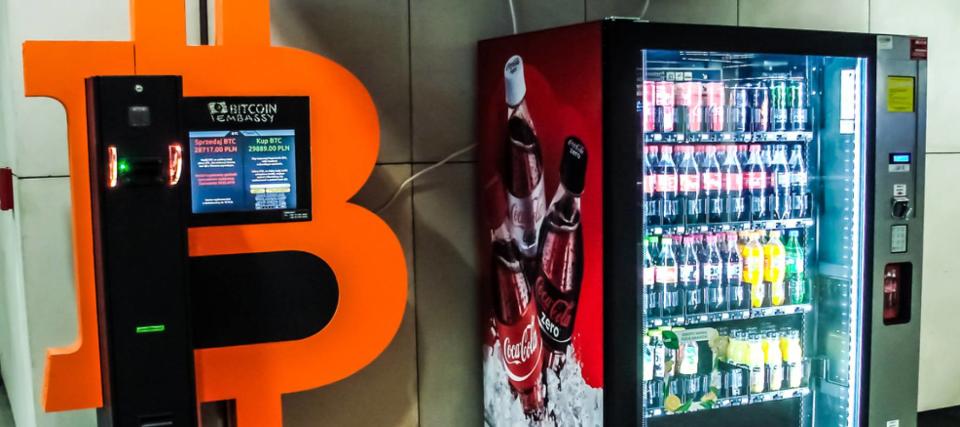Is crypto really democratizing finance? New data shows a class divide between low-income users and rich investors

In a short time, cryptocurrencies have gone from a curiosity to a popular way to diversify a portfolio — but are they really accomplishing what their inventors set out to do?
Whether crypto is being used as a replacement for traditional money or just another way to grow one's wealth can depend on a person's income, banking status and even education, a recent Federal Reserve report shows.
The report found that higher-income individuals tend to use their crypto solely as an investment and almost always have a traditional banking relationship. As for those actually using crypto to buy and sell, about 60% have annual incomes of less than $50,000.
With almost one in five Americans holding some amount of crypto today, the question is no longer whether crypto will change the world, but whether its use will disrupt or merely reflect the country's class divides.
Don’t miss
Too many Americans are still missing out on cheaper car insurance
Mitt Romney says a billionaire tax will trigger demand for these two physical assets — get in now before the super-rich swarm
Hot inflation could last for years, warns the president of the World Bank — get creative to find strong returns
Crypto use more common in ‘underserved communities’
Just like with traditional assets, those who have more money are more likely to be investors, says Merav Ozair, a blockchain expert and FinTech professor at Rutgers Business School.
“I'm not surprised to hear that,” Ozair said after reviewing the Fed’s figures. “This is exactly in line with what I know about this ecosystem and the research that I'm doing."
Ozair explained that those who use crypto for investing are “basically looking for profit,” so they treat it like other asset classes, like stocks and futures.
Meanwhile, lower-income Americans are more likely to use cryptocurrencies for transactions and less likely to have a traditional bank account or credit card.
The report adds that almost one quarter of people with less than a high school degree and 20% of those with income less than $25,000 were "underbanked."
According to the Library of Congress, an “unbanked” person is someone who doesn’t have a checking or savings account with an FDIC-insured institution, while an "underbanked" person might have such an account but regularly relies on alternative financial services such as a check cashing company or payday lender.
Ozair says she's not surprised that those who use crypto as a payment method come from what she calls “underserved communities.”
She points to the Philippines, where about 71% of adults were unbanked in 2019, according to a survey by the Central Bank of the Philippines.
Ozair explains that with crypto adoption at nearly 80% in that country, these alternative currencies are helping fill the gap for those underbanked citizens.
Too ‘early’ to talk about socioeconomic impacts
Still, only about 3% of adults and 13% of those considered underbanked are currently using crypto to make purchases. So what’s stopping the underbanked in the U.S. from relying more on crypto to disrupt the system?
Ari Juels, professor at the Jacobs Technion-Cornell Institute at Cornell Tech, suggests we may be looking at the wrong metrics.
“I wouldn’t measure Google and Amazon’s disruption of the tech ecosystem mainly in terms of who is buying and profiting from Apple or Amazon stock,” Juels says. “I don’t think many people would.”
He argues that the success of blockchain technologies shouldn’t be measured based on who is profiting from it, but whether it’s benefiting society as a whole.
“The question is: ‘How useful are these technologies to communities of users and in what ways?’ If you ask that question, it’s clear that it’s early days for blockchain technologies,” he says.
Like Juels, Ozair believes that “we aren’t there yet” in terms of full societal transformation, despite seeing some progress in offering new opportunities for people who otherwise wouldn’t have access to traditional support from the financial industry.
Juels adds the term crypto itself “shows how extensive misunderstanding of the technology is,” adding that all the “hype” often drives “ill-advised investment.”
For him, the most exciting prospect isn’t cryptocurrency itself — it’s the “power and possibilities” of blockchain technology.
“People are tracking cryptocurrency price movements instead of focusing on the technology itself and its current pockets of real promise,” says Juels.
He sees vast potential in using crypto to help decentralize finance, but adds nobody really understands crypto enough to be able to “forecast with any accuracy” how the technology will change over the next five to 10 years.
Until then, Ozair suggests anyone interested in helping unlock crypto’s potential get involved at their local level with others who share their values and vision.
“Give the feedback to the developers to build it right,” says Ozair. “[On] how to make it useful, how to make it efficient, how to make it productive … and not just a product for a product[‘s sake].”
What to read next
Get the latest personal finance news sent straight to your inbox with the MoneyWise newsletter
A TikToker paid off $17,000 in credit card debt by 'cash stuffing' — can it work for you?
Bill Gates just won legal approval to buy 2,100 acres of North Dakota farmland worth $13.5M — and people are ‘livid’
This article provides information only and should not be construed as advice. It is provided without warranty of any kind.

 Yahoo Sports
Yahoo Sports 